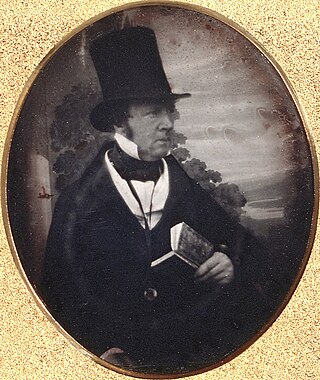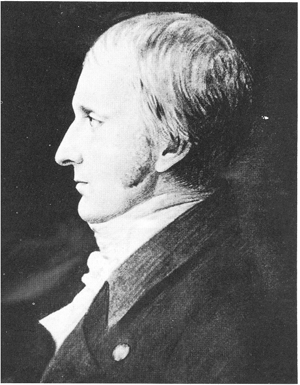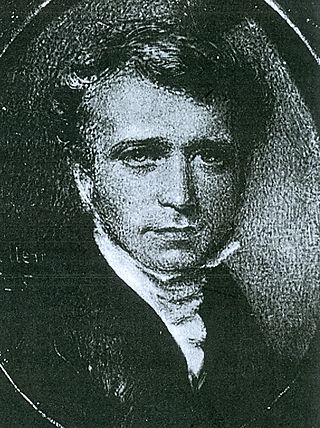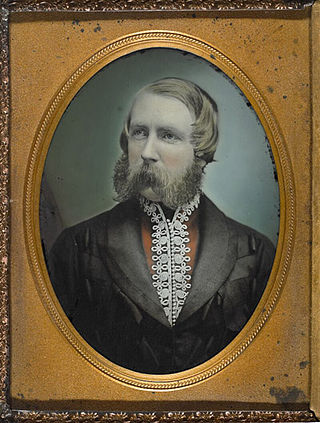
Calotype or talbotype is an early photographic process introduced in 1841 by William Henry Fox Talbot, using paper coated with silver iodide. Paper texture effects in calotype photography limit the ability of this early process to record low contrast details and textures.

William Henry Fox Talbot was an English scientist, inventor, and photography pioneer who invented the salted paper and calotype processes, precursors to photographic processes of the later 19th and 20th centuries. His work in the 1840s on photomechanical reproduction led to the creation of the photoglyphic engraving process, the precursor to photogravure. He was the holder of a controversial patent that affected the early development of commercial photography in Britain. He was also a noted photographer who contributed to the development of photography as an artistic medium. He published The Pencil of Nature (1844–1846), which was illustrated with original salted paper prints from his calotype negatives and made some important early photographs of Oxford, Paris, Reading, and York.

The collodion process is an early photographic process. The collodion process, mostly synonymous with the "collodion wet plate process", requires the photographic material to be coated, sensitized, exposed, and developed within the span of about fifteen minutes, necessitating a portable darkroom for use in the field. Collodion is normally used in its wet form, but it can also be used in its dry form, at the cost of greatly increased exposure time. The increased exposure time made the dry form unsuitable for the usual portraiture work of most professional photographers of the 19th century. The use of the dry form was mostly confined to landscape photography and other special applications where minutes-long exposure times were tolerable.
The year 1854 in science and technology involved some significant events, listed below.

Frederick Scott Archer was an English photographer and sculptor who is best known for having invented the photographic collodion process which preceded the modern gelatin emulsion. He was born in either Bishop's Stortford or Hertford, within the county of Hertfordshire, England and is remembered mainly for this single achievement which greatly increased the accessibility of photography for the general public.

John Dillwyn Llewelyn was a Welsh botanist and pioneer photographer.
Rev. Joseph Bancroft Reade FRS FRMS was an English clergyman, amateur scientist and pioneer of photography. A gentleman scientist, Reade co-founded the Royal Microscopical Society and the Royal Meteorological Society.

Richard Beard was an English entrepreneur and photographer who vigorously protected his photographic business by litigation over his photographic patents and helped to establish professional photography in the UK.

Thomas Wedgwood was an English photographer and inventor. He is most widely known as an early experimenter in the field of photography.
Events from the year 1854 in the United Kingdom.
Martin Laroche, born William Henry Silvester, was an early English professional photographer who successfully challenged William Fox Talbot's patent on the calotype and effected a liberalisation in professional practice, research and development that catalysed the development of photography in the nineteenth century.

James Ambrose Cutting (1814–1867) was an American photographer and inventor, sometimes called the inventor of the Ambrotype photographic process.

Henry Collen was an English miniature portrait painter to Queen Victoria of the United Kingdom and the Duchess of Kent. Later in life he turned to photography and was the first professional calotypist in London.

The Edinburgh Calotype Club of Scotland was the first photographic club in the world. Its members consisted of pioneering photographers primarily from Edinburgh and St Andrews. The efforts of the Club's members resulted in the production of two of the world's earliest assembled photographic albums, consisting of more than 300 images.

Farnham Maxwell-Lyte FRSC was an English chemist and the pioneer of a number of techniques in photographic processing. As a photographer he is known for his views of the French Pyrenees.
Paper texture effects in calotype photography limit the ability of this early process to record low contrast details and textures. A calotype is a photographic negative produced on uncoated paper. An important feature is that a relatively short exposure in a camera produces a latent image that is subsequently made visible by development. Then positive images for viewing are obtained by contact printing. This technique was in use principally from 1840 into the 1850s, when it was displaced by photography on glass. Skilled photographers were able to achieve dramatic results with the calotype process, and the reason for its eclipse may not be evident from viewing reproductions of early work.

Peter Wickens Fry was a pioneering English amateur photographer, although professionally he was a London solicitor. In the early 1850s, Fry worked with Frederick Scott Archer, assisting him in the early experiments of the wet collodion process. He was also active in helping Roger Fenton to set up the Royal Photographic Society in 1853. Several of his photographs are in the Victoria and Albert Museum in London.
Photo-crayotypes were an artistic process used for the hand-colouring of photographs by the application of crayons and pigments over a photographic impression.

Hugh Owen was one of the first generation of amateur photographers in the United Kingdom.

The Wothlytype was an alternative photographic printing process, the eponymous 1864 invention of the German Jacob Wothly, in which a mixture of uranium ammonio-nitrate and silver nitrate in collodion formed a light-sensitive layer.